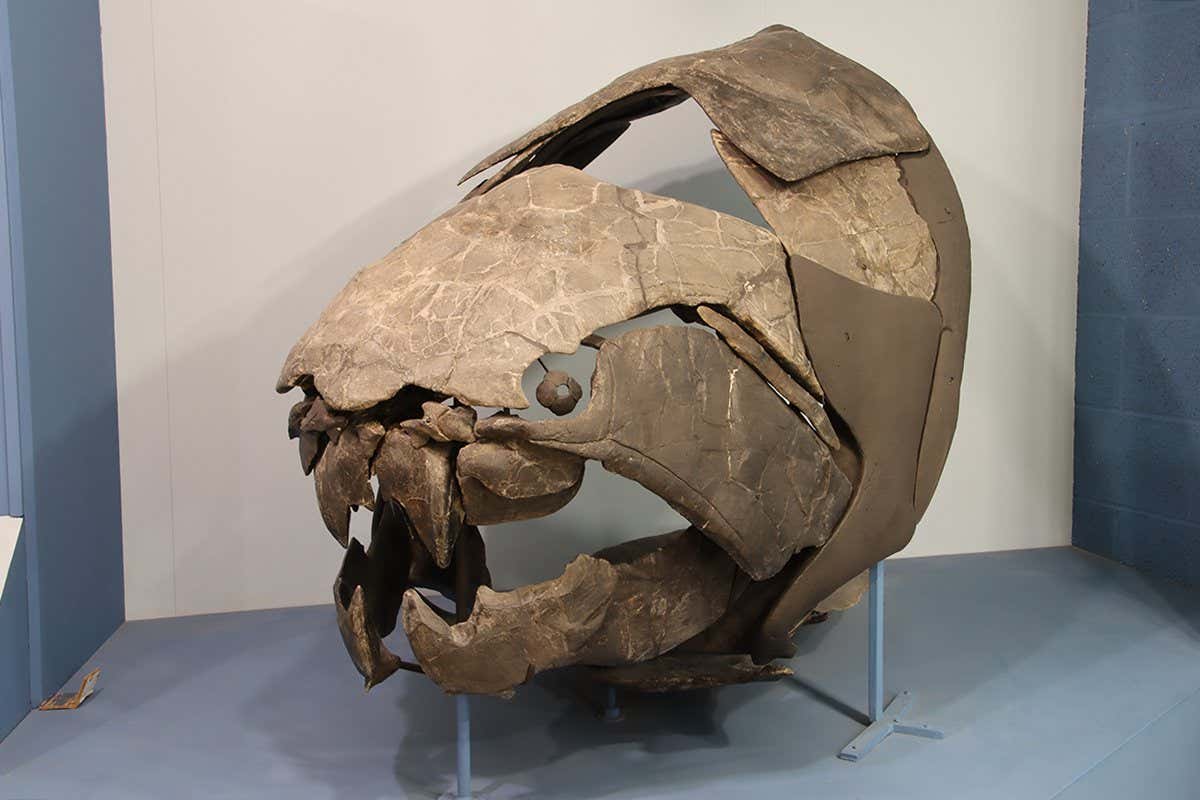Rethinking Size: Ancient Fish Debunked – A New Perspective on Prehistoric Marine Life
For decades, the colossal size of certain ancient fish has captivated the imagination, painting a picture of prehistoric oceans teeming with gigantic predators. However, recent research is challenging these long-held beliefs, forcing a significant re-evaluation of our understanding of these ancient marine giants. This article dives into the fascinating debate surrounding the size of ancient fish, exploring the evidence that has led to a significant downsizing of some previously enormous specimens.
The Myth of the Mega-Fish: Examining Previous Estimations
The popular image of ancient oceans is often populated by monstrous fish, their size inflated by imaginative interpretations of incomplete fossil evidence. Early estimations relied heavily on fragmentary remains, often leading to significant overestimations based on extrapolation and assumptions about body proportions. For example, the Leedsichthys problematicus, once considered to be the largest fish ever, had its size estimations dramatically reduced following more rigorous analysis of its skeletal structure.
- Incomplete Fossil Evidence: Many ancient fish fossils are incomplete, with missing bones and sections of the skeleton. This lack of complete data made accurate size estimations extremely challenging, leaving room for considerable error and speculation.
- Scaling and Extrapolation Errors: Early estimations often relied on scaling techniques based on incomplete fossil remains, leading to unreliable and often inflated size estimates. The assumption of similar body proportions to related, smaller species often led to significant overestimations.
- Lack of Modern Analytical Techniques: Previous research lacked the advanced imaging and analytical techniques available today. Modern techniques, like 3D scanning and computer modeling, allow for much more accurate reconstruction and size estimation.
New Research: A More Realistic Picture Emerges
Recent studies utilizing advanced technology have revolutionized our understanding of ancient fish sizes. Researchers are now employing sophisticated methods such as:
- 3D Scanning and Modeling: This allows scientists to create detailed digital reconstructions of partially preserved fossils, providing a more complete and accurate picture of the fish’s size and shape.
- Comparative Anatomy: By comparing fossil remains with extant (living) species, researchers can refine their understanding of body proportions and scale their size estimations more accurately.
- Phylogenetic Analysis: Using phylogenetic analysis, scientists can determine the evolutionary relationships between ancient and modern fish, allowing for more robust estimations of body size based on evolutionary trends.
These new methods have consistently led to a significant reduction in the estimated size of many ancient fish. This doesn't diminish their importance, but it does offer a more accurate and nuanced perspective on their place within the prehistoric ecosystem.
Implications for Understanding Prehistoric Marine Ecosystems
The re-evaluation of ancient fish sizes has significant implications for our understanding of prehistoric marine ecosystems. A more accurate representation of their size impacts our understanding of:
- Predator-Prey Dynamics: The revised sizes of these ancient fish can significantly alter our understanding of the predator-prey relationships within the prehistoric oceans.
- Food Web Structure: A more accurate size assessment influences how scientists reconstruct the complex food webs that sustained these ancient ecosystems.
- Evolutionary Pressures: The actual size of these fish helps scientists better understand the evolutionary pressures that shaped their morphology and survival strategies.
Conclusion: A Continuous Process of Refinement
The ongoing research into ancient fish sizes demonstrates the importance of critically evaluating scientific data and embracing new methodologies. While the captivating image of gigantic prehistoric fish persists in popular culture, scientific advancements continuously refine our understanding of these magnificent creatures. The ongoing process of revising and refining our understanding of the past is a testament to the dynamic and evolving nature of scientific discovery. Further research will undoubtedly continue to shed light on the true size and significance of these ancient marine giants.
Keywords: Ancient fish, Leedsichthys problematicus, prehistoric fish, fossil analysis, paleontology, marine ecosystems, 3D scanning, size estimation, scientific discovery, evolutionary biology.

